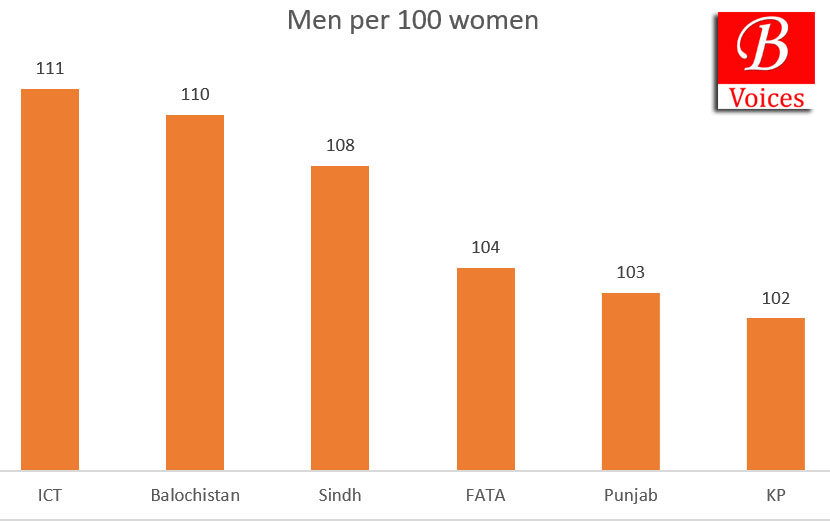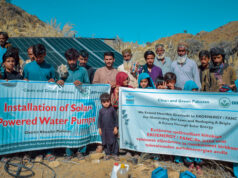Adnan Aamir
Quetta: Balochistan records highest annual growth rate in population among all provinces of Pakistan as compared to 1998 census, revealed provisional results of 2017 census which were made public on Friday after meeting of Council of Common Interests (CCI).
Pakistan conducted its 6th annual census after gap of 19 years earlier this year. According to the provisional results the population of Pakistan is 207.77 Million (Mn) and there has been an annual growth rate in population of 2.4% per year since 1998.
Province-wise population
According to the provisional results population of Punjab is 110 Mn, Sindh 47.88 Mn, Khyber Pakhtunkhwa (KP) 30.52 Mn, Balochistan 12.34 Mn, FATA 5 Mn and Islamabad Capital Territory (ICT) 2.0 Million. Population figures of Azad Jammu Kashmir (AJK) and Gilgit Baltistan (GB) were not announced and will be announced later.
Balochistan recorded the highest annual population growth rate with 3.37%. Same rate for KP is 2.89%, FATA2.41%, Sindh 2.41% and Punjab 2.13%. As compared to 1998, annual growth rate decreased in National Level, Punjab and Sindh whereas it increased in Balochistan, FATA and KP.
Population increase in Balochistan and KP can be attributed to naturalization of Afghan refugees and higher birth rates as compared to other parts of Pakistan.
Population increase in Balochistan and KP can be attributed to naturalization of Afghan refugees and higher birth rates
Read also: Inclusion of Foreigners in Census not Acceptable: Jirga Tells Federal Government
Urbanization
Similarly, the census results showed that Urbanization level in Pakistan has reached to 36.38% in the country. Urban population is 50.88% in ICT, 52.02% in Sindh, 27.55% in Balochistan, 18.77% in KP and just 2.84% in FATA.
Balochistan has higher Urbanization rate as compared to KP despite having a lower less promising Human Development Indicators as compared to KP. The plausible reasons can be that huge portion of population of Balochistan has shifted to Quetta – the only Metropolitan city in Balochistan.
Gender Imbalance
Results about gender population comparison showed that 51% population of Pakistan consists of Males. This means that for every 100 women there are 106 men in Pakistan.
Likewise, there are 110 men in Balochistan, 108 men in Sindh, 104 men in FATA, 103 men in Punjab and 102 men in KP for every 100 women.
Again, Balochistan has the highest proportion of gender imbalance in the country. This merits investigations and studies on abnormally lesser population of females.
Higher urbanization rate in Balochistan can be that huge portion of population of Balochistan has shifted to Quetta – the only Metropolitan city in Balochistan
Controversy
Criticism on census results has already started and mainly coming from Sindh based on the allegations that population of Karachi has not been accurately recorded.
PPP is rejecting the census as they don’t believe 52% of Sindh has been urbanised. They have tired their best to ruralise the urban areas.
— Syed Ali Raza Abidi (@abidifactor) August 26, 2017
According to a report, Hyderabad’s population in the 2017 census is under 2 million – but in 1998 was 2.8 million – how can it fall so much?
— omar r quraishi (@omar_quraishi) August 26, 2017
Find it hard to believe that according to the 2017 census figures Lahore’s population grew far more rapidly than Karachi’s
— omar r quraishi (@omar_quraishi) August 26, 2017
Census results are completely bogus and part of demographic warfare against smaller ethnic groups. New census under international observers.
— Karachi_Post (@Karachi_Post) August 26, 2017












